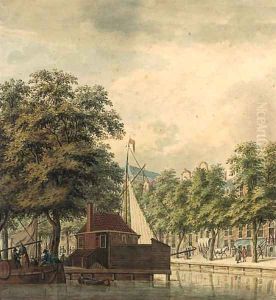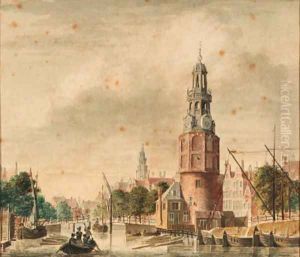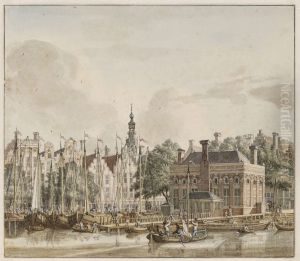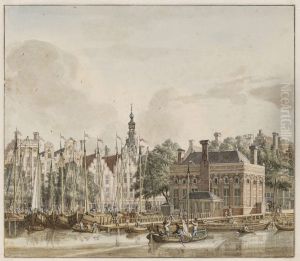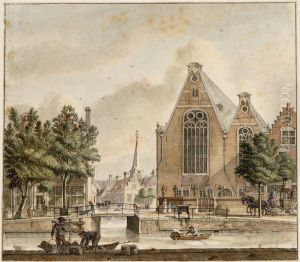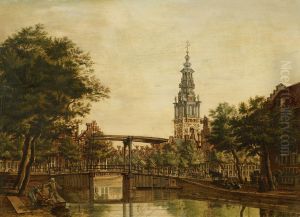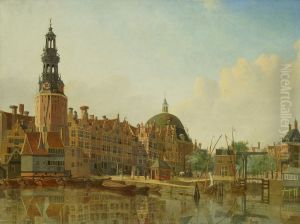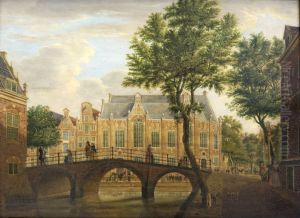Jan De Beijer Paintings
Jan de Beijer was a Dutch artist known primarily for his works as a draughtsman and topographical draftsman, born in Aarau, Switzerland, in 1703. However, his family moved to the Dutch Republic when he was still a child. De Beijer's early life in the Netherlands was crucial in shaping his future career, as he was exposed to the rich artistic traditions of the Dutch Golden Age, even though he was born just after its decline.
De Beijer received his initial training from his father, who was also an artist, before continuing his studies under the tutelage of the landscape painter Cornelis Pronk. This apprenticeship was instrumental in developing his skills in drawing and etching, which he would later use to create his renowned topographical works. He traveled extensively throughout the Netherlands, documenting towns, cities, castles, and ruins with an eye for detail and accuracy, which was highly appreciated at the time.
Throughout his career, De Beijer was commissioned by various patrons who desired accurate portrayals of their estates and the surrounding landscapes. His works did not just serve an aesthetic purpose; they were also valuable records of historical and architectural significance. De Beijer's drawings provide historians with a wealth of information about the 18th-century Dutch landscape and built environment, many aspects of which have since changed or disappeared.
Jan de Beijer's drawings were often reproduced as engravings and prints, contributing to his fame during his lifetime. His work was characterized by a meticulous approach to detail and an emphasis on realism, which made his drawings sought after for their documentary value. Despite his importance as a topographical artist, De Beijer remains less well-known than some of his contemporaries, partly because he specialized in a genre of art that was less glamorous than the grand historical or mythological paintings of the time.
Jan de Beijer passed away in 1780 in Emmerich am Rhein, which is now in Germany. His legacy is preserved in the numerous collections that hold his drawings and prints, including museums in the Netherlands and beyond. These works continue to be of interest not only to art historians but also to anyone fascinated by the history of urban and rural landscapes in the Netherlands during the 18th century.
